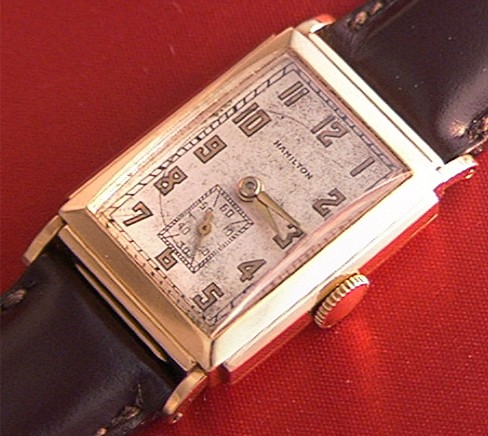
The Hamilton
Andrews |

A Glimpse of History - 1931 Unemployment soared to over 4 million Americans. Europe registers the highest levels of
unemployment ever recorded. The U.S.S.R. is in the process of creating agricultural cooperatives where the state owns all land, equipment, and farm products produced. Each worker receives pay based on their participation. This social experiment is given an opportunity by the poor economic conditions in the West. The U.S.S.R. also bans the sale of the bible. In New York, the police make a drug raid which recovers over 1 million dollars worth of opium. Also in New York, the Empire State Building is opened, making it the world's tallest structure. Al Capone is sentenced to 11 years in prison for
tax evasion. Thomas A. Edison, the great inventor who brought
the world hundreds on inventions |
History of the Hamilton Andrews
In 1928, the Hamilton Watch Company of Lancaster, PA bought the Illinois Watch Company. Lacking a rectangular movement of their own, Hamilton used the 17 jewel Illinois grade 207 and upgraded it to 19 jewels, with the ruby roller and pallet jewels as sapphires, set many of them in raised gold jewel settings and called it the Hamilton grade 401. This movement was used in some of their highest end watches for a 6 year period.
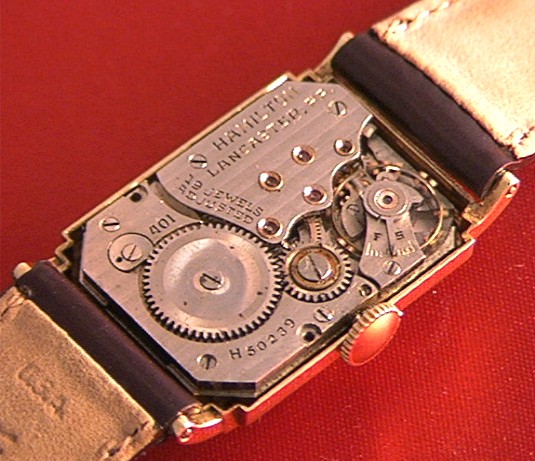
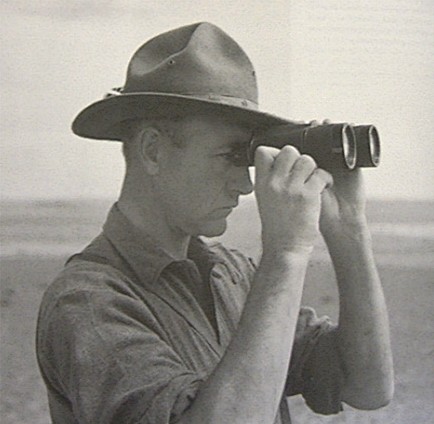
Roy Chapman Andrews
In 1931 Hamilton introduced the model called "Andrews". This watch was named for Roy Chapman Andrews, the paleontologist who traveled across the Gobi desert in the 1920's, finding dinosaur nests complete with eggs. This watch was produced until 1936, with 1129 being produced in 14k solid white gold, 1137 in 14k solid yellow gold, 3 in 14k solid green gold and 1 in 18k solid yellow gold.
Production numbers for the Andrews broke down as such (information from Rene Rondeau):
Andrews production numbers |
1931 | 1932 | 1933 | 1934 | 1935 | 1936 |
| 14K White Gold | 418 | 358 | 254 | 94 | 4 | 1 |
| 14K Yellow Gold | 237 | 332 | 367 | 201 | - | - |
(Production numbers for the 18K and the 14k green gold models not known to author)
The 14k gold versions sold for $110 with painted gold numerals or $115 with raised numerals.
Text from a 1934 Dealer Advertisement
12/0 Size,
Grade 401, 19 Jewels ANDREWS Note: Grade 401 is made from Illinois model 1-12/0 size |
Review of the Hamilton Andrews
The Case
The Hamilton Andrews has a two piece case
made from 14k solid yellow gold. The fit of the snap on caseback is astounding. After
nearly 70 years the fit is still snug and exact. The design of the caseback cradles the
movement exactly as well. However, the case is in no way water resistant. The case
measures 30mm in length (38mm including lugs), 23mm in width (25mm including crown) and
6mm in height (10mm including crystal), and takes an 18mm strap. There is no engraving on
the case. Some prefer it this way, but I think a personalized engraving adds personality
to the piece.
The Design
The case is very "Art Deco" and "Minimalist" at the same time. It is
stepped from the top down and vertically at the corners as well. Offsetting these
potentially harsh lines, steps and edges is the gentle downward curve of the lugs and the
bottom of the case, and the rich dome of the crystal. It's design reflects elements being
used at that time, as in its contemporary, the Empire State Building.
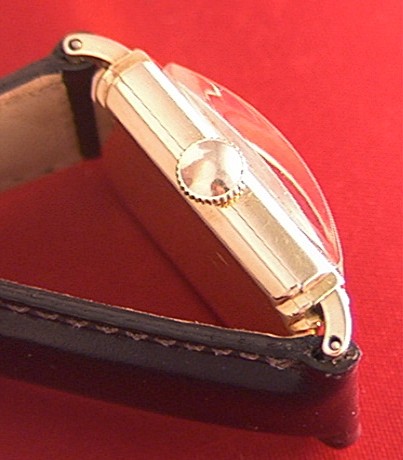

The Movement
The movement, Hamilton grade 401, winds nicely. A larger winding stem needs to be cut to
fit the enlarged stem tunnel created from many decades of this watch being wound &
set, resulting in a slight wobble in the winding stem. At purchase time it was accurate to
<30 seconds per day. The watchmakers' marks inside the case back indicate it has been
serviced a minimum of 9 times in its life. There is no shock protection on this movement.
Otherwise, the movement was in great shape when I purchased the watch. For more
details, see the dealer ad text above.
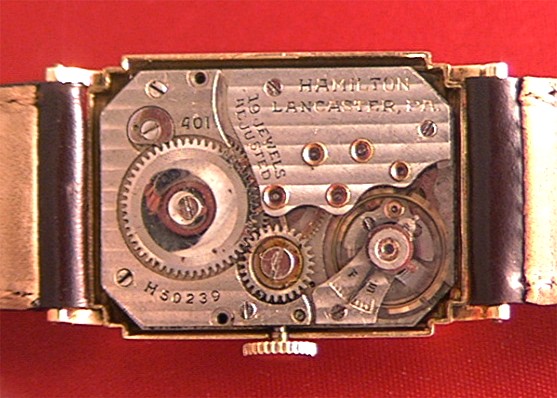
The Dial
The dial has aged a good amount, but not badly for a non-water resistant 70 year old
watch! The minute hand dragged on the dial at one time, creating a semi-circle around the
face. The numerals were gold painted, and on close inspection one can see where the dial
maker painted outside the lines! The numbers are gold in a deco typeface that has just
enough flourish to it to counter the straight lines of the square minutes & seconds
tracks. The gold hands are in good condition and the dial design complements the case
design nicely.
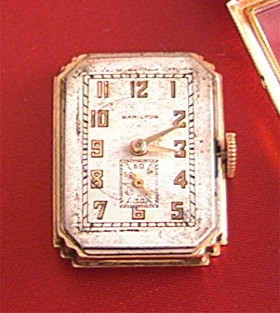
In Conclusion
This is a very collectible, rare watch. Finding it at a good bargain I plan to keep it. It
is a perfect watch to wear out to a nice dinner or to the theatre. When I go out, I cannot
help but imagine the original owner doing the same with his "new" watch almost
70 years ago!
